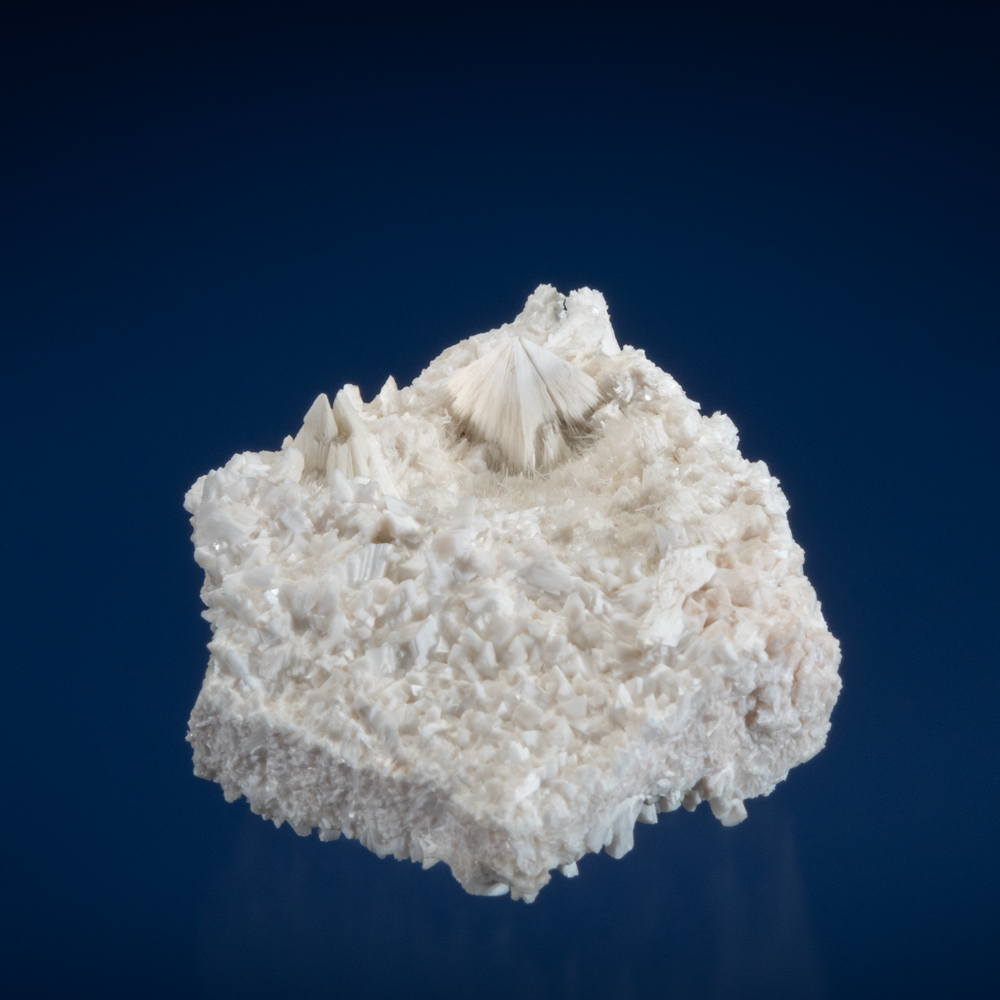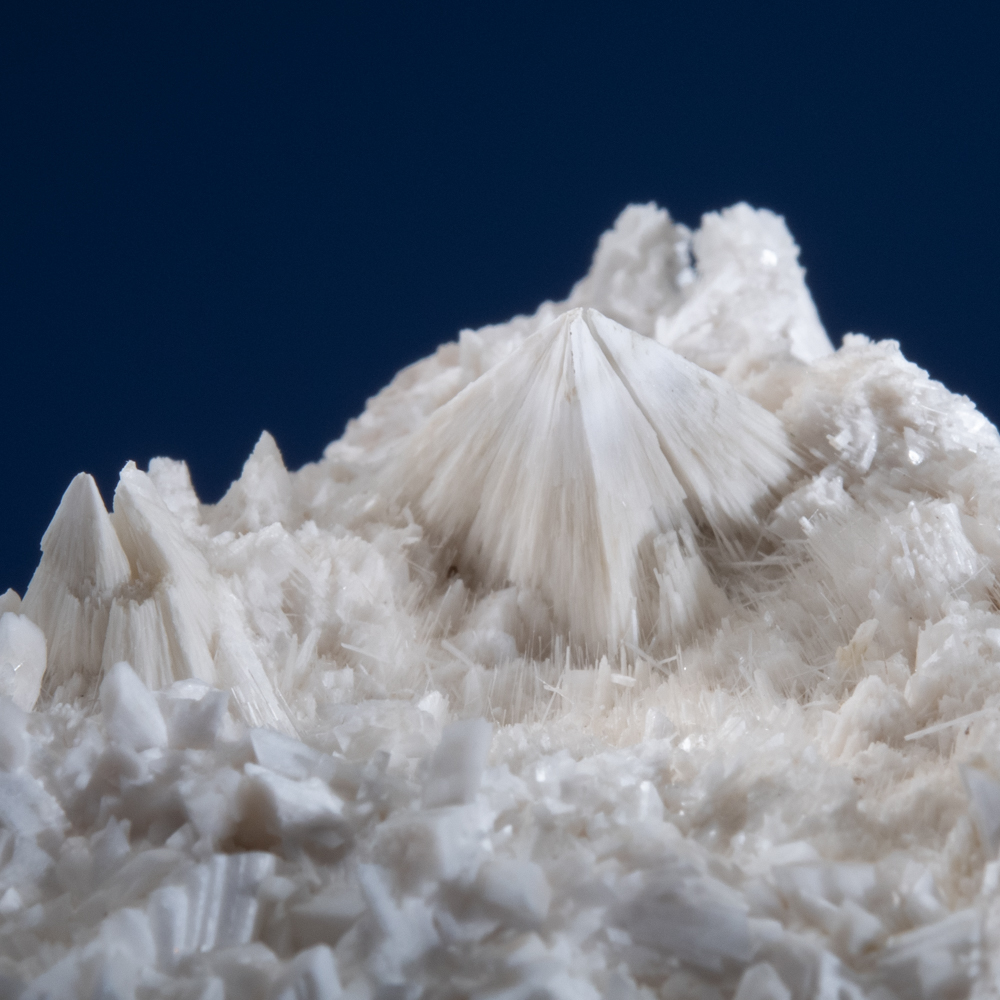Description
Detailed Description
Conical groups of mesolite crystals standing up on laumontite crystals. Under magnification, one can see that many of laumontite crystals are associated and intergrown with mesolite crystals, although there are also nice sharp laumontites without penetrating mesolite crystals. In excellent condition. A fine specimen from the 2021 pocket.
About the Minerals of the Bay of Fundy (click here)
About These Mesolite-Laumontite Specimens
The cliffs at Stronach Brook are along a relatively hard-to-access stretch of the Bay of Fundy shoreline which has rarely produced fine mineral specimens. In 2021, a pocket-vein system produced radiating aggregates of mesolite crystals on laumontite. The specimens are attractive and unusual – each group of mesolite crystals stands up on the laumontite and has the look of a tepee (conical lodge tent historically used by certain indigenous North American peoples). The “tepee” mesolites were a unique find. And it is material unlikely to be found again, not only because the pocket-vein is exhausted, but because we discovered (the hard way) that the access area is home to a large number of ticks…
Laumontite is a relatively common zeolite group mineral (that can occur in excellent specimens!) but because it usually dehydrates relatively quickly in air (and can then turn to powder), it is not so commonly preserved and encountered in mineral collections.
These mesolite-laumontite specimens have been stabilized. After experimentation with various methods and materials, it has been found that a technique using a mixture including water-soluble glue is the most effective, with no impact on the visual appearance of the specimens (colour or lustre). Nova Scotia laumontite specimens stabilized using this method have proven stable over longer than 20 years, with no indication that such stability will change (in mineral cabinets, at approximate normal indoor humidity levels – ranging from approx. 25-75%). Specimens in my own collection are as good as the day they were stabilized.




